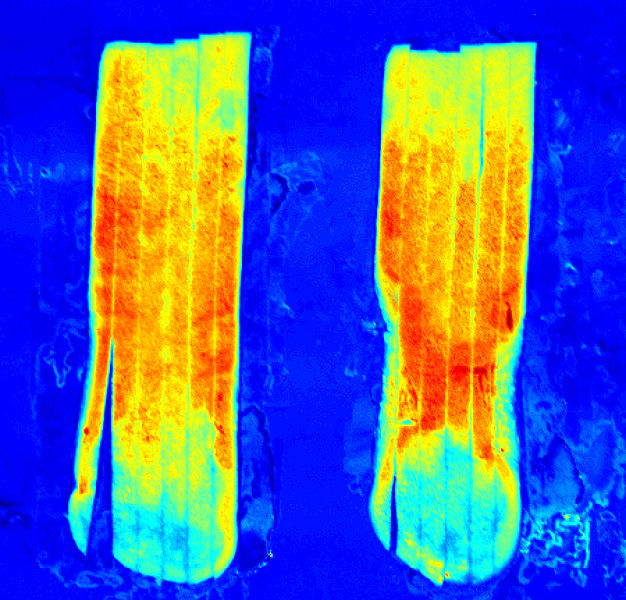
MDA signs five-year contract with feds to advance satellite imaging
by Canadian Manufacturing.com Staff

The company has reached a deal with Defence Research and Development Canada to lead a team of organizations in pursuit of improving hyperspectral imaging, a process which separates light into spectral bands to capture highly detailed photographs

A hyperspectral image of potato strips shows details indiscernible to the naked eye or a conventional camera. MDA is working to advance the technology on behalf of our federal government to identify chemical and biological threats in theatres of military operation. PHOTO: SortingExpert via Wikimedia Commons
VANCOUVER—Canadian satellite communications firm MacDonald, Dettwiler and Associates Ltd. announced July 27 that it has signed a five-year contract with Defence Research and Development Canada (DRDC) to advance hyperspectral imaging technology.
DRDC, a science research wing of the Department of National Defence, aims to use this advanced photographic technology to detect chemical and biological threats in military theatres of operation.
To this extent, MDA will lead a team of five Canadian organizations with expertise in the field.
Hyperspectral imaging gathers more detailed and sophisticated information about the world’s oceans, lakes, land and vegetation than conventional photography because it collects the full spectrum of light reflected or emitted from the Earth’s surface and separates it into dozens of spectral bands.
Most colour cameras can only pick up three spectral bands, which correspond to the visual primary colors: red, green and blue.
A hyperspectral camera on the other hand acquires the light intensity for a multitude of bands for each pixel in an image, which captures objects in precise detail and allows for classification of objects based on their spectral properties.
By revealing the spectral properties of various features, this technology makes them easier to identify than with a conventional camera and the naked eye—oil for example.
MDA says analyzing hyperspectral images of a feature on the ground or in the atmosphere can reveal its composition and evolution while providing critical information to environmental, security and natural resources decision makers.
The company also states that this initiative will help develop and validate airborne and ground-based hyperspectral imaging capabilities in ultraviolet, visible near-infrared and low-wave infrared spectral ranges.
“MDA has had a long history at the forefront of hyperspectral technology and of partnering with DRDC to advance capabilities to protect the men and women in the Canadian Armed Forces (CAF). The technology created by this project will help expand upon this work by better enabling the detection of chemical and biological threats in theatres of operation,” said Norman Hannaford, MDA’s vice president.
“It is through partnerships such as these that Canada is able to provide CAF members with state-of-the-art technology, which help protect against today’s emerging defence and security threats,” said Dr. Marc Fortin, assistant deputy minister (Science and Technology), Department of National Defence.